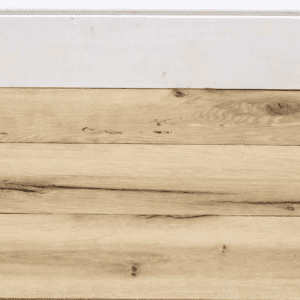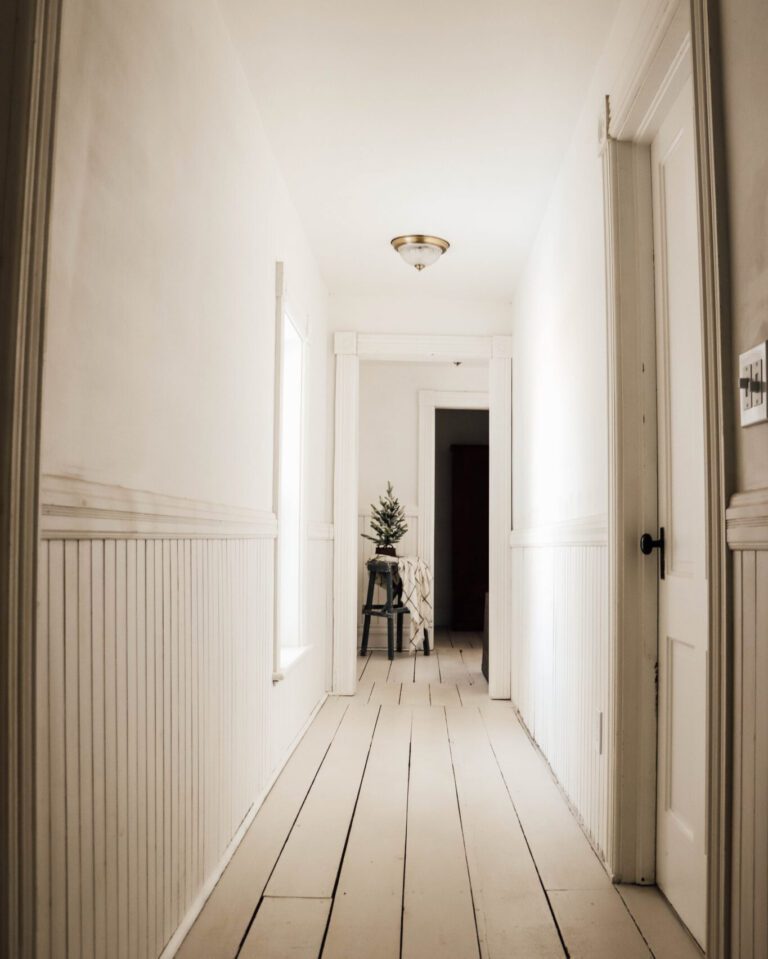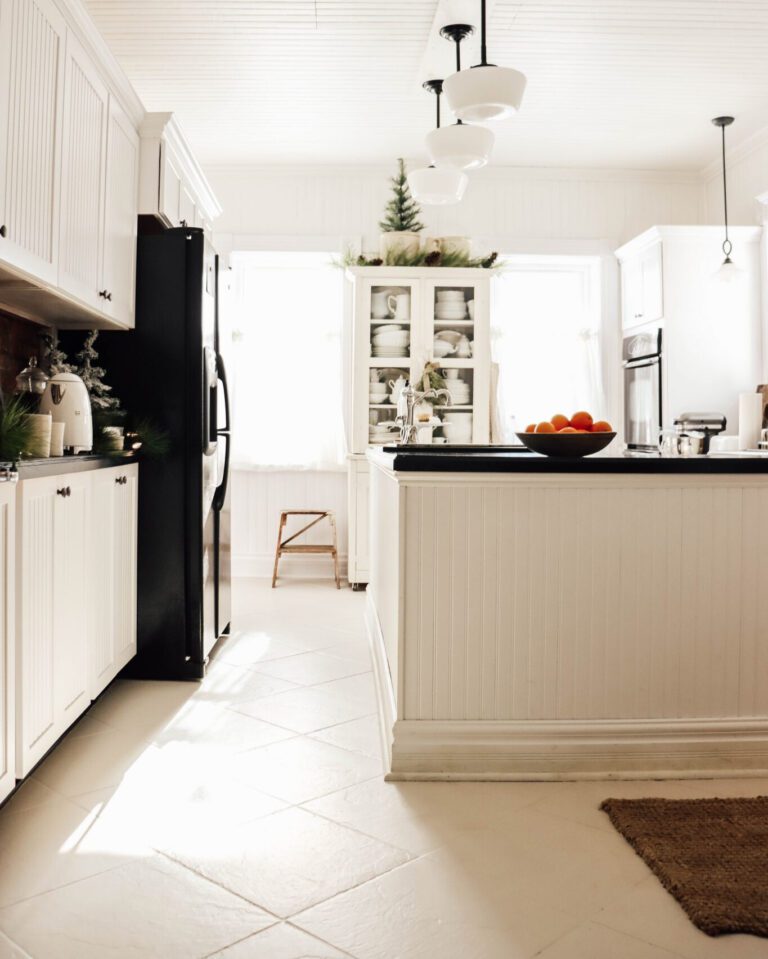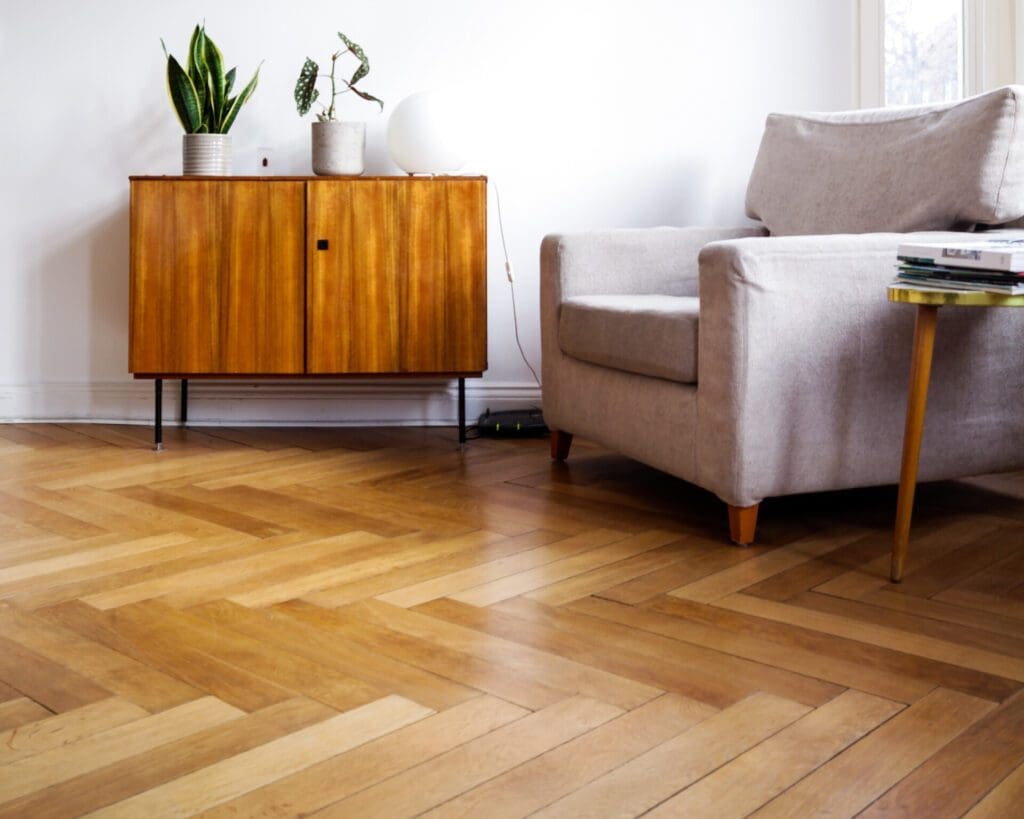

In this post, we review eco friendly flooring options that are better for the planet and your health.
The Home Green is reader-supported and may receive a commission if you decide to make a purchase through a posted link, at no cost to you.
Flooring can have a big impact on your design aesthetic and budget, which is why making a final decision can be so hard. Among many considerations, you’ll want to make sure that what you’re selecting is appropriate for your situation and that it will be a good long-term investment. We believe part of making the best decision for the long haul means finding an eco-friendly flooring option that is safe for you and the planet.
Sorting through marketing hype to understand the pros and cons of various options can be tough – we’re here to help. The good news is, that there are so many flooring materials available these days, that we’re sure there’s a great solution for your flooring needs.
Natural options for eco friendly flooring
Renewable bamboo flooring
The benefits and uses for bamboo seem never-ending so it’s not a surprise that it is at the top of our list. Anyone who’s ever had a bamboo plant in their yard can tell you it’s fast-growing and very tough. This can be a challenge if you’re attempting to remove said bamboo plant but the flip side is that it makes it an excellent choice as a flooring material.
Bamboo is technically a grass, not a hardwood, but it can be manufactured to look similar to traditional hardwood flooring. If you’re concerned that the look of bamboo flooring won’t match your interior design style, chances are there is a type that would work well in your home and the costs are typically in the same range as other wood options, making it a great choice.
During the selection process, make sure to inquire about the toxicity of adhesives used in the manufacturing process. Specifically, you’ll want to make sure low-VOC (volatile organic compound) or no-formaldehyde adhesives are used. A reputable and sustainable seller should be able to provide you with certifications and documentation certifying the safety of their products.
Naturally sustainable cork flooring
Cork is such a fascinating material! It is made by removing the bark of a cork oak tree. When done properly, this bark can be removed many times throughout a cork oak tree's life and it will regenerate new bark each time. As a natural material, cork is also biodegradable, making it an even more appealing option.
One of the most differentiating features of cork is its springiness. While that’s probably not the technical term flooring professionals would use, it feels like an apt way to describe the way that cork can be compressed and then quickly return to its original shape. It’s this quality that has made it perfect for sealing wine bottles for centuries and also what makes it soft underfoot.
Cork is also fairly resilient and appropriate for high-traffic areas. Its biggest downside is that while it can bounce back from the repeated impact of foot traffic, it is not well suited to trauma from sharp objects like high heels or pet claws. Additionally, while it is water resistant, it will not hold up well in pooling water or high-humidity areas.
While selecting the right type of cork and the right sealant can help with the downsides of cork flooring, people with pets or frequent visitors with high heels may need to think about if and where cork flooring is appropriate in their homes.
Surprisingly sustainable linoleum flooring
Linoleum flooring is a tricky one! True linoleum, sold under the brand Marmoleum, is a great eco-friendly flooring option. What makes it tricky is that linoleum has become an overused word that people have come to associate with products that are not actually linoleum. It is sometimes used to reference vinyl flooring which is a different material altogether.
True linoleum flooring is made from natural materials like linseed oil (hence the name), cork dust, and wood flour. Not only does it have natural origins, but it is also durable and can last for decades.
Many of us remember linoleum flooring from the classrooms and gymnasiums of our youth. While it was used in those places for good reason, namely durability and cost-effectiveness, today’s linoleum flooring has evolved considerably. While those colorful tiles still exist, new wood-toned varieties have expanded the versatility of these eco-friendly flooring materials, making it one worth considering for your home.
Much like cork flooring, you’ll want to be thoughtful about where you purchase from and be sure to do your research on the seller. Ask questions about the toxicity of the linoleum flooring you’re considering and any adhesives or other finishes that would be used in installation.
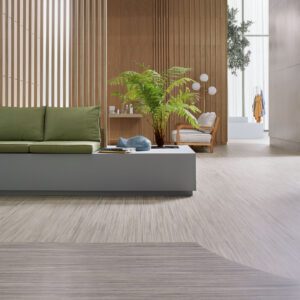

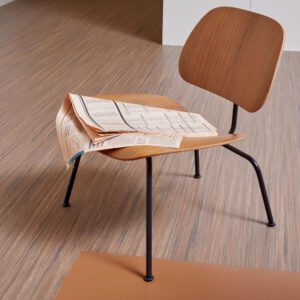



Marmoleum mages courtesy of Forbo
Natural wool carpeting
Wool carpeting is widely regarded as a high-end floor covering and it also has many advantages when it comes to sustainability versus synthetic fibers. One of the biggest is that it’s made from a renewable resource which means it’s also biodegradable. In addition, wool also has many amazing properties including being naturally fire and stain-resistant and also being a great insulator.
Despite these positive attributes, there are some drawbacks to consider. First, wool has an association with luxury for a reason – wool carpeting can be costly. This cost, however, can be for good reason. Since wool is the product of a living animal, there are significant costs associated with the responsible care of sheep and the environment they inhabit. One of the best indicators to look for is the Responsible Wool Standard, a certification that validates that what you are purchasing has sustainable origins.
Eco friendly recycled flooring
Salvaging scrap into recycled metal tiles
Recycled metal tiles may be the coolest flooring material you’ve never heard of. To make these tiles, metal is salvaged from discarded products like cars, machinery, or appliances, melted down, refined, and formed into tiles. They create a surface that is not only durable but saves metal from landfills and reduces the need for the use of materials in new products.
As versatile as they are unique, recycled metal tiles are also appropriate for other areas of home decor such as in a kitchen backsplash, or in roofing and wall coverings. The metal creates a distinctive and unique look that is difficult to replicate with any other material. One note of caution is that metal flooring can be louder than other materials, so consideration should be exercised in deciding where this type of flooring is most appropriate in your home.
Recycled glass tiles: a beautiful eco friendly flooring option
Glass tile is a great example of a material where selecting the most sustainable choice is also the most beautiful. Recycled glass tile has character unlike anything newly manufactured which brings texture and uniqueness to your space.
Like recycled metal tiles, these tiles are made from recycled and salvaged materials. The glass is ground down, melted, and remade into tiles that can be used in residential and commercial projects.
Create a unique, eco friendly flooring design with recycled ceramic tile
Recycled ceramic tiles are tiles typically made from post-consumer or post-industrial ceramic waste, such as broken tiles, discarded pottery, or unused materials from construction sites. These materials are processed, cleaned, and often combined with other recycled materials or additives to create new tiles.
The manufacturing process for recycled ceramic tiles usually consumes less energy and produces fewer emissions compared to the production of conventional tiles made from new materials. Recycled ceramic tiles can come in various styles, colors, and patterns, offering a sustainable option for interior and exterior uses.
A recycled ceramic tile seller to check out is Fireclay Tile (pictured on the right in the left picture below). They're a certified B Corp and their sustainability policies set them apart.
Clay Imports is another great manufacturer. They're an artisan-first, US-based business headquartered in Austin, Texas. Images of their gorgeous product below – while they feature the tile used on walls, it's a great flooring option, too!
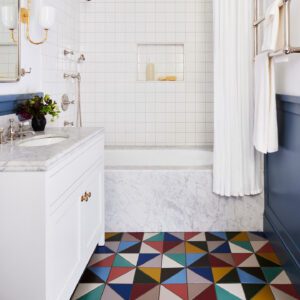

Image courtesy of Grey Dove Designs, photo by ohhh_snapp
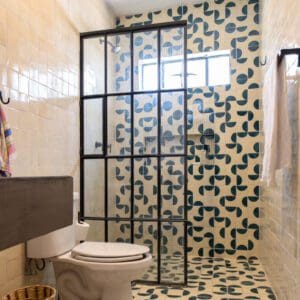

Image courtesy of Clay Imports
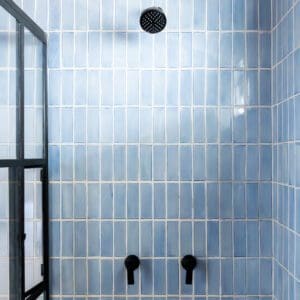

Image courtesy of Clay Imports
Recycled rubber flooring
While recycled rubber flooring is less commonly used in residential spaces, it’s worth knowing about since it can be a great material for a home gym, playroom, or other recreational space.
This type of flooring is pretty much exactly what it sounds like: flooring made from discarded rubber, often from old tires. It most often comes in rolls or tiles that can be used to cover a subfloor. When installed, it has a lot of qualities that make it a really great floor option for the right situation. It’s shock and sound absorbing, easy to care for, and is a naturally slip resistant surface. And since it’s made from a recycled material, it’s also eco-friendly.
Sustainable wood flooring
Reclaimed wood flooring
If you can get your hands (or feet) on vintage, reclaimed wood flooring, it can add so much texture and character to your space. Reclaimed wood flooring is exactly what it sounds like – wood salvaged from a previous setting and repurposed in a new way.
Using reclaimed wood is a great way to reuse something that could end up in a landfill. It also reduces the demand for new timber and the risk of deforestation. Opting for reclaimed wood is also a great way to be sure that your flooring is completely unique since no other space will have flooring with the same unique wear and tear.
Reclaimed wood has become such a popular material that one of the drawbacks is that it can be difficult to find – particularly if you are looking for a specific type or tone. In addition, it can get pricey. Be sure to investigate multiple sources so that you can compare prices, origins, and appearance.
Reclaimed white oak flooring
Reclaimed yellow pine flooring


Reclaimed red oak flooring


Reclaimed hickory flooring
Images courtesy of Modern Timber Craft
Solid or engineered hardwood flooring
Hardwood flooring can be an eco-friendly flooring choice if you keep a few guidelines in mind. First, avoid any exotic hardwoods since they can be slower growing and have the potential to come from areas without responsible forestry practices. You’ll also want to ask questions about finishes and adhesives used in production and installation to be sure that the flooring you’re considering for your home is both eco-friendly and non-toxic. Finally, look for certifications like FloorScore, FSC Certification, and Programme for the Endorsement of Forest Certification (PEFC) and ask questions about how the wood was harvested to make sure it was done responsibly.
Other ideas for eco friendly flooring
Repurposing what you have as a sustainable flooring option
Before rushing out to buy new flooring, it’s always great to consider if it’s possible to repurpose materials already in your home. For example, if you have old wood floors, could areas be repaired or replaced rather than removing everything? It’s hard to replicate the texture and character of vintage wood flooring so we recommend removing it only as a last resort.
Paint is another option that can sometimes be forgotten. With the right design plan, a painted floor can look beautifully unique. It’s also possible to paint and even stencil old ceramic or linoleum flooring. It’s worth considering, even if it just delays the need for new flooring, especially if it means it gives you more time to save your budget for the most eco-friendly flooring that you really want.
Diana Marie Home embraced this idea and created a great look that goes beautifully with her vintage farmhouse and uses what was already there. The pictures below highlight her painted look. Check out her full article on how to paint wood and tile floors!
Things to consider when looking for eco-friendly flooring
When choosing eco-friendly flooring, consider factors such as where products come from, manufacturing processes, and the overall life cycle of the product. Additionally, look for certifications such as Forest Stewardship Council (FSC) or Programme for the Endorsement of Forest Certification (PEFC) for wood products or FloorScore certification to understand the impact any flooring choice would have on your home’s indoor air quality.
The great news is that there are many vendors and manufacturers committed to eco-friendly flooring and there’s almost surely a great solution for your flooring needs.
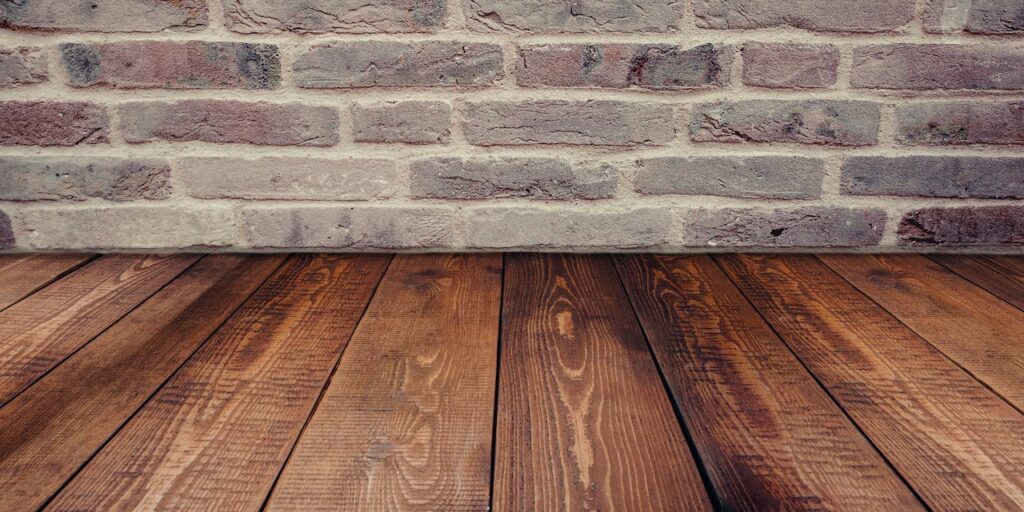

FAQs about eco friendly flooring
Is concrete an eco friendly flooring option?
Concrete flooring can have mixed sustainability reviews. While brand-new concrete can have a high environmental impact, refinishing and reusing existing concrete rather than removing and trashing it, can be a sustainable choice.
Concrete does have some eco-friendly qualities including excellent thermal mass. This means that it is good at absorbing, storing, and releasing heat which can help stabilize indoor temperatures and reduce heating and cooling costs.
What should I look for when shopping for eco friendly flooring?
A few important things to look for include materials that are natural, renewable, recycled, or upcycled. Additionally, asking questions about the toxicity, and any certifications that the manufacturer has received are great ways to assess the sustainability of the flooring you’re considering.
One final thing to consider is durability. Classic, high-quality flooring should look great in your home for decades. Resist the temptation to buy something inexpensive and temporary that will only end up in a landfill.
What does FloorScore® certified mean?
FloorScore® is a certification program developed by the Resilient Floor Covering Institute (RFCI) that focuses on indoor air quality and the emission levels of volatile organic compounds (VOCs) in flooring materials. The certification is most typically used in association with flooring products made of vinyl, linoleum, and rubber.
The FloorScore® certification is designed to ensure that flooring materials meet specific standards for low VOC emissions, contributing to better indoor air quality. Indoor air quality is a critical consideration, especially in commercial and residential spaces, as high levels of VOCs can be unhealthy.
To achieve FloorScore® certification, flooring products must undergo the testing criteria set by the program. If a product meets the established standards for low VOC emissions, it can receive the FloorScore® certification, indicating that it is a more environmentally friendly and healthier option.
What are the most sustainable flooring materials?
There are a lot of things that make some flooring more sustainable than others. This can include being made of a renewable material, using reclaimed or recycled materials, having a low carbon footprint, being sustainably manufactured or harvested, or scoring well in terms of having low-VOC emissions. The more of these attributes that a product possesses the better, but exactly which the best and most sustainable flooring will be for your home will depend on your unique circumstances.
Free tips and inspiration in your inbox
Stay up to date on the latest news in sustainable interior design! Enter your email address below to be included on our newsletter distribution list.


